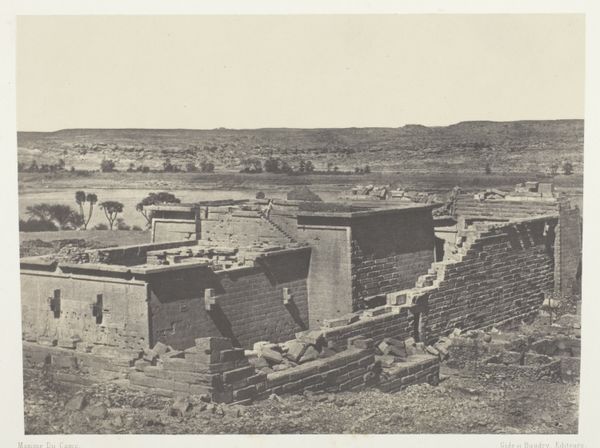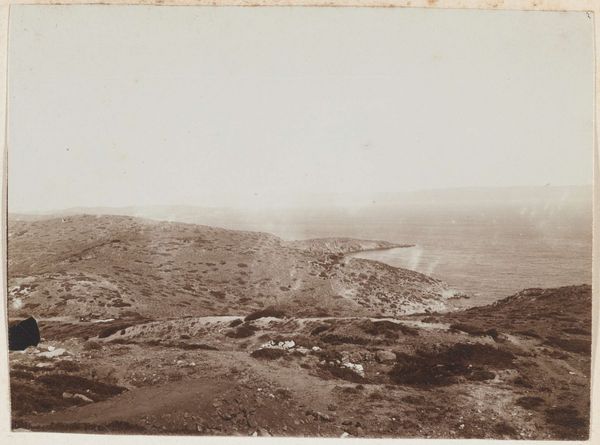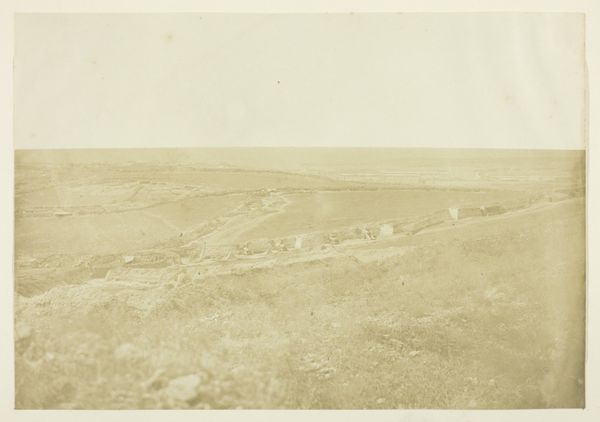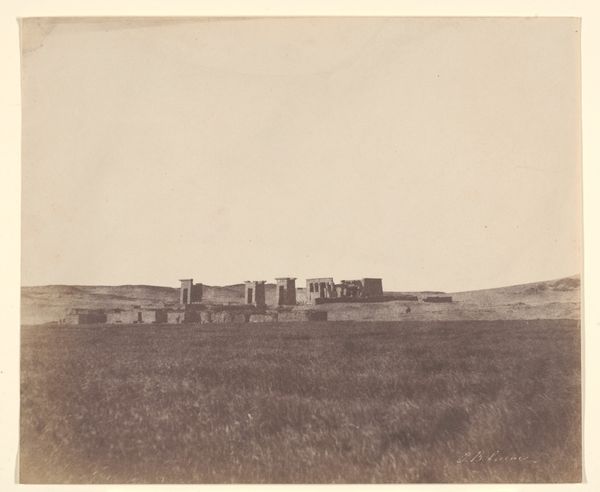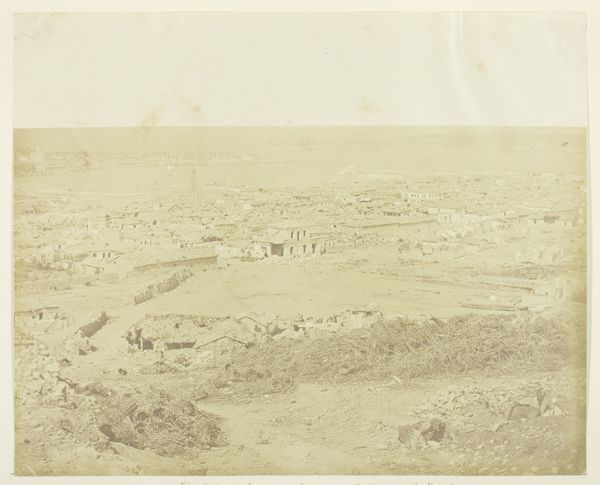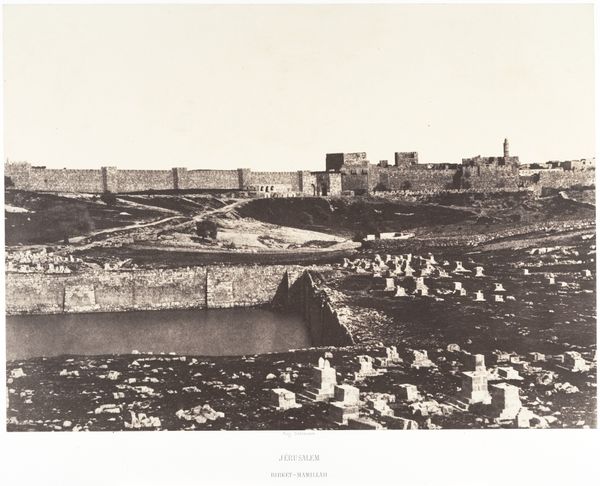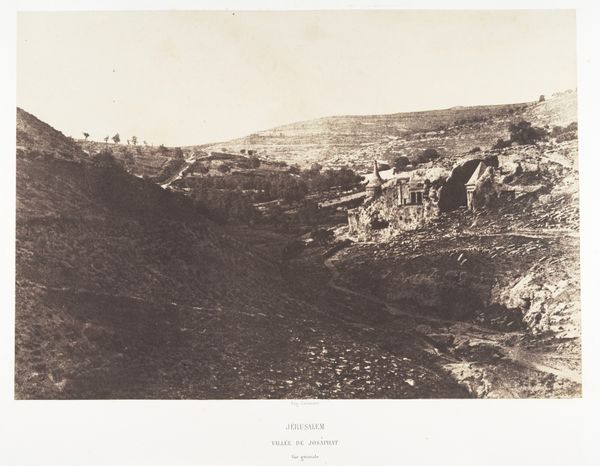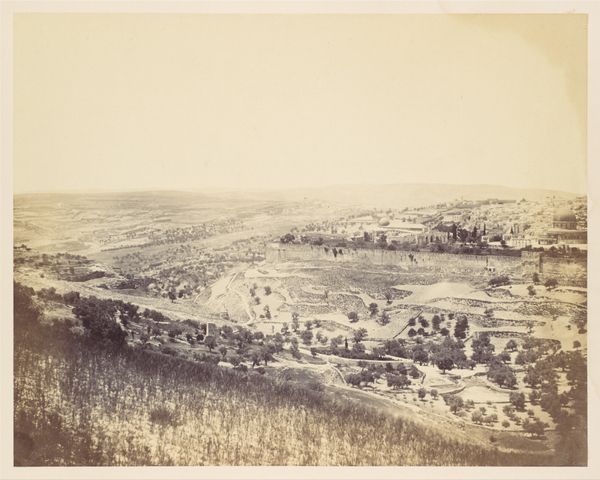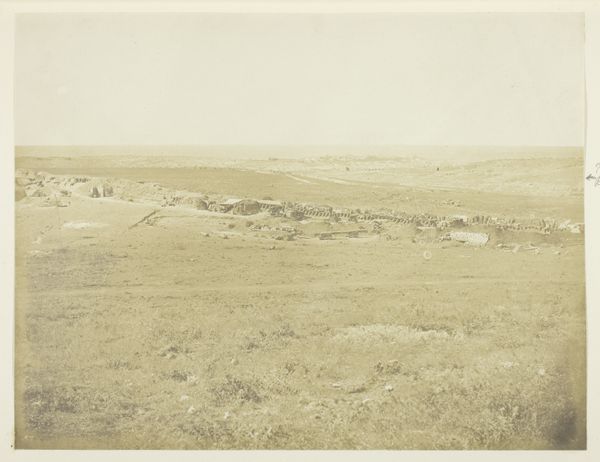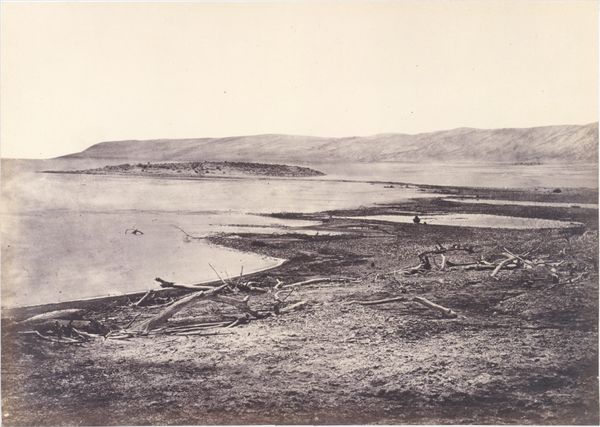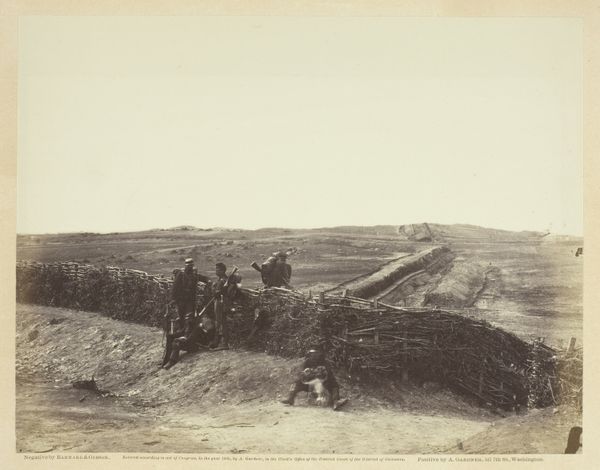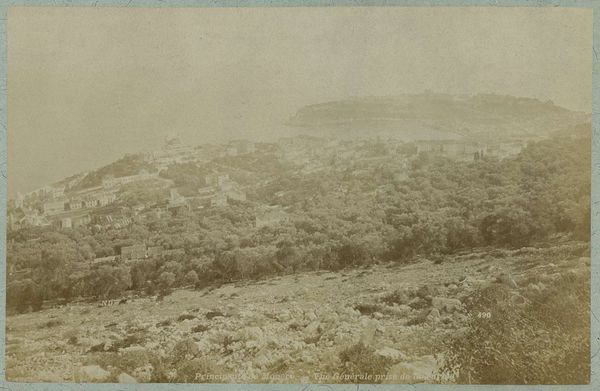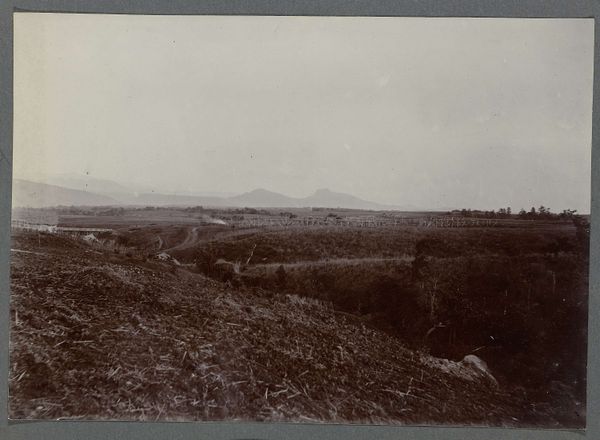
print, daguerreotype, photography
# print
#
landscape
#
daguerreotype
#
photography
#
orientalism
Dimensions: Image: 23.4 x 33 cm (9 3/16 x 13 in.) Mount: 44.8 x 59.7 cm (17 5/8 x 23 1/2 in.)
Copyright: Public Domain
Editor: This is "Jérusalem, Côté Sud de Jérusalem" by Auguste Salzmann, a photograph dating back to sometime between 1854 and 1859. It feels quite stark. I'm struck by how the city is presented as almost an extension of the landscape itself. What do you see in this piece? Curator: The formal elements of this photograph present a carefully constructed interplay of light and shadow. Note how Salzmann uses the high vantage point to compress the spatial recession. The tonal range, while limited by the daguerreotype process, is carefully deployed to articulate the architectural forms and the textures of the land. Editor: So you're focusing on the arrangement of the image, less on what it represents? Curator: Precisely. Consider the geometry. The horizontal thrust of the city walls contrasts with the diagonal slopes of the surrounding terrain. This tension creates a visual dynamism. Are you noticing how the subtle gradations of tone contribute to a sense of depth? Editor: I see that now, yes. It's interesting how he uses light and dark to create layers. Is that a common feature of this type of photography? Curator: Early photography often grappled with the challenge of representing depth and volume. Salzmann’s approach, through his astute manipulation of tonal values and compositional arrangements, showcases a sophisticated understanding of visual structure. Editor: I initially missed a lot of that, focusing on what was depicted. Looking at the interplay of shapes and light really changes how I see it. Thanks! Curator: Indeed. It is through an examination of form that we unlock deeper understanding of artistic intention and effect.
Comments
No comments
Be the first to comment and join the conversation on the ultimate creative platform.
